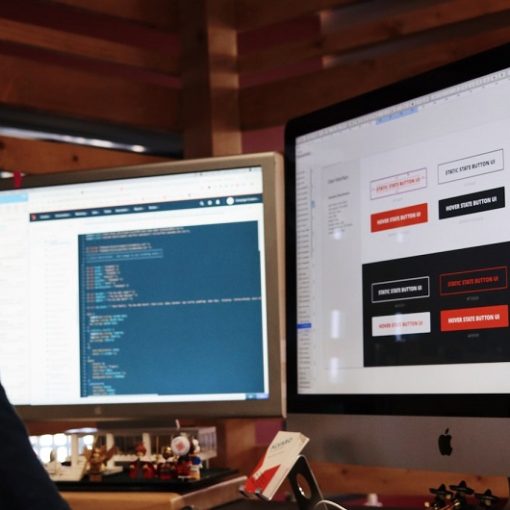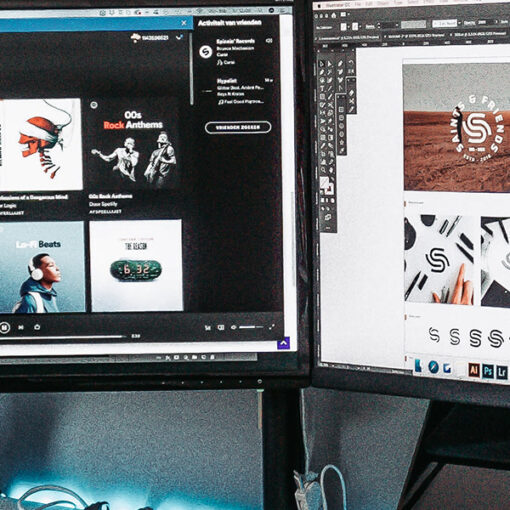Have you ever come across a website that confuses you completely? More so, annoyed you at a time when you needed help in real-time?
If you have experienced such a website that felt like a complete waste of time, it should not be difficult to understand your audience’s feelings if your website experience is not optimized.
User Interface (UI) is one critical element that can ensure your website experience is always superior. However, here’s the thing.
Getting an optimum UI experience is not always easy.
There are so many areas that can create confusion. From navigation flow to content architecture, design complexity, site structuring, and many more.
But fret not. You have help.
In this blog post, we not only answer why UI is so critical for your website optimization. We dive deeper into the building blocks of a great UI experience in 2021.
Why is user interface design so important?
The user interface of your website is not only critical from a superior experience standpoint but for creating a sustainable brand in the online space. It not only can drive high-quality traffic to your online address but retain their attention to convert them into loyal customers. What follows is a growth in your brand equity, awareness, and revenue year over year.
Yet this is not all.
Optimizing your UI design at regular intervals makes sure you are in line with the changing behavior of your audience. Using analytics tools like Hotjar, now you can easily understand the areas and UI elements that your traffic interacts maximum with.
The best part?
Your designs become data-driven then.
Now when you know why UI is such a critical part of your designs, let’s take a look at what user interface design is.
What is user interface design?
User interface design popularly known as UI design is the systematic methodology designers use to build interfaces between a user and machine (ideally software).
In doing so, designers pay special attention to the overall aesthetics, style, and feel of the digital product. More than often this includes GUIs (graphical user interface), voice control interfaces, and much more. But in general, the whole agenda of conducting a strategic user interface design sprint is simple. It focuses on creating visually pleasing designs based on the target audience’s choices and preferences to ensure they have the easiest and most immersive experience interacting in the digital atmosphere.
However, many times companies get this wrong. Blending UI with UX (user experience) is the first area where this starts losing the central goal. While interaction focuses on the least friction path of interactions between a machine and a user, experience deals with the overall flow. The interface deals with the aesthetic appeal of your website experience for your users.
Being one of the building blocks of your website experience, a great UI can benefit your business in many ways. Right from high-quality lead attraction to retention, and many more aspects.
Curious to know them all.
The following section takes you to the heart of the multifarious benefits of user interface design. Read on.
The many benefits of user interface design
The user interface design has multi-level benefits. Done right, it can not only prepare your business for today’s success but ensure you can sustain your competitive edge. But what exactly are they?
Let’s find out.
1. Improved overall experience
User interface is one of the key main ingredients that ensure a superior user experience for every visitor landing on your page. The better you can optimize the visual graphics for your page, the better will the conversion goals for your page.
2. Immersive engagement
If there is one thing that UI design champions, it is user engagement. This means with the usage of the right elements and icons at the right place, you can turn your UI into an audience engagement tool. With a simple navigation system, your UI can ensure that your traffic can achieve their goals on your page in the most efficient yet fastest way possible.
3. Improved brand loyalty
In an ideal situation, you would want to acquire new customers all the time. But take a pause and think for a moment here.
Would customer acquisition be of any use if your sales pipeline is leaky? You wouldn’t want to lose your valuable customers whom you gained by investing so much hard work and resources. Would you?
This is exactly where UI design comes in handy. Ensuring to provide a superlative experience to your audience, great UI helps you get a competitive edge over your competitors. What follows is improved brand loyalty where your customers are not only your super fans but twin as your brand evangelists.
In an ideal situation, there are many elements that you can use to work up with. From color codes, stylized photography, custom font type to visual architecture, there is always something more you can blend into improving the experience. But that is not all. In the long run, this often turns out to improve your brand equity.
4. Personalized interaction
If there is one element that can make or break your complete user experience it is generic features.
Today, your audience needs and expects more every day. Gone are the times when one size fits all designs, copy and offerings worked. If you have to see results you need to personalize and customize your offerings on the basis of your audience’s real-time needs. This is why personalized one-to-one interactions have become so critical in modern business success.
There are so many ways you can do this. Using historical data to design every interaction for your audience is the core element of personalization. From integrating chatbot conversations, welcome messages to automated email updates so much can be done. The best part is it helps to scale the same quality of user experience for every potential customer of your business on the basis of their real-time needs.
5. Optimal production costs
One of the many significant benefits of good UI lies in its unique capability to cut down your production costs. This means, with a superior user interface design you can always expect to see higher ROI (return on investment), get more from less.
Designing the UI at the early stages of your product development often leads to evaluation and revelation of faults and vulnerable points in your product. It would naturally lead to faster development cycles. This means gaining product-market fit will be lean, agile, and less expensive. But that is not all that a great UI design can save you from.
Along with curbing the short-term monetary losses, UI design ensures your brand reputation doesn’t fall into jeopardy.
6. Streamlined customer base
In a time when your business runs on an attention economy, you cannot miss any opportunity to get your audience’s attention. The best part of UI design is that it can help you to achieve so all the time.
Ensuring a smooth product interaction experience, a great UI design can make sure you not only gain new eyeballs each day but retain their interests to build a sustainable relationship. The best part?
UI has a huge role in establishing your brand as trustworthy and authoritative.
7. Optimized product support costs
One of the most significant elements that make up a great product is the customer support you provide to your potential customers about your product. There are so many ways you would want to do this. From training videos, documentation guides to live chats, the list goes on. But the only downside here is it takes a significant amount of budget to ensure quality support.
UI design can successfully help you lower down these costs. The more precognitive your designs are the flatter the learning curve for your audience. This will automatically translate into the lower requirement of training and assistance because of the simplified usage.
The best practices of user interface design
Sure, knowing the importance of user interface gives you the head start towards successful website development. But if you have to have an edge over your competitors, integrating the best practices is critical. Here are a few elements that can help you with that.
1. Design for all
Your audience is the same yet different people. This means no matter how similar their core goals are, they are different individuals with unique interests. Ensuring you create a flexible design that is not too general yet personalized for your audience is where the sweet spot lies.
2. Less is the new more
The best of designs all have one thing in common. They use less to communicate with.
This makes content design a priority. A pro tip here would be to create a copy-driven design. Let your text complement your visuals. Each element should be the extension of the other instead of the repetition.
3. Design for every screen
In today’s complex digital world, you can meet your potential audience anywhere. They might be visiting you via a smartphone, laptop, smartwatch, and even other devices. multiple devices. This makes optimizing your UI design for multiple devices a prerequisite.
Conclusion
Creating an impactful user interface design is hard.
After all, with the dynamic behavior of your audience, there is no one trend that can give you results forever. This makes the reiteration of your UI design flow so critical. But then it is not your area to showcase your creativity.
Remember, your prime goal here is to use aesthetics that pleases your target audience and leads them to your desired goals. Thus, anchoring your creativity with data-backed strategies is critical here.
More than often, finding your most desirable designs comes from talking to your users. Keep the feedback loop open. Ask them. What frustrates them, what pleases them. The better you get an idea about their psychographics, the better your chances for successful UI designs.
Now with all those feeds, there is just one thing left to do. Take action.



